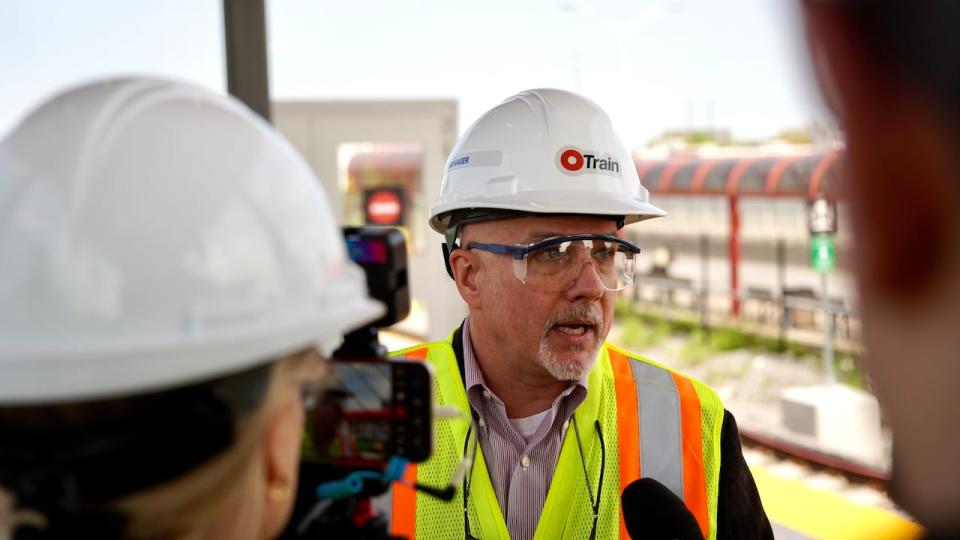Trillium Line operators nearly trained, but opening remains vague

OC Transpo staff who invited media to take a look at the newly extended north-south rail line suggested a best-case scenario puts its launch date in August or September.
But if you're looking for a firm opening, don't hold your breath.
The Trillium Line is now two years behind schedule.
While transit advocates and councillors have long said they don't want a repeat of the problematic Confederation Line launch, their patience has been wearing thin.
They asked for some sort of commitment to a deadline in February, but as of Thursday, the director of rail construction said staff plan to maintain a vagueness around the opening date.
"I always just measure based on the performance of the system. As of today, because we haven't run 18 hours a day, I can't give you an educated assessment of how reliable the system is," Michael Morgan told reporters.
"We want to make sure we take our time and put the system into service when it's been proven and determined that it's reliable."
When pressed, Morgan said the earliest possible opening would be six to ten weeks after all operators finish their 150 hours of mandatory training — which remains about a month away.

Michael Morgan, Ottawa's rail construction director, stands between a Stadler FLIRT train and an Alstom LINT train at the new Albion Maintenance and Storage Facility. (Nicolas Legault/CBC)
No 'large problems' yet
OC Transpo has been training operators for months, with many recruited from among an existing pool of bus drivers.
Because trains used on this line are diesel, there's no overlap between those operating the east-west Confederation Line and those who will work on this new extension.
Trillium operators also need to be up-to-speed on both the new Stadler FLIRT trains and the legacy Alstom LINT trains, which were used on the old O-Train line.
Derek Moran, the manager of the rail operations program, is content with how things are progressing.
"We haven't had any unexpected, large problems yet. I don't think we will," he said. "These vehicles are tried and true in other properties and we've been very happy with their performance."

Derek Moran, manager of rail operation for OC Transpo, speaks to reporters on Thursday. (Patrick Louiseize/CBC)
That doesn't mean there have not been challenges on the line, chief among them the fact that much of the existing rail was single track.
With trains running in both directions sharing the rails, there's a limit to how often they can run.
If a train has an emergency, there's no way to bypass it.
"You have to be mindful that it's not all about the performance of the trains and the infrastructure, but sometimes the public as well," he said. "If somebody unfortunately has a medical event at a station, that's something that we have to recover from as quickly as possible while making sure that they get the care that they need."

The new Stadler FLIRT trains have more doors to allow for faster boarding. (Nicolas Legault/CBC)
Smaller trains confined to airport line
The new Stadler vehicles are twice the length of the older trains, which Morgan said will address a complaint Carleton University students had about the older Alstom model.
"They've got double the number of doors, which is very important for boarding and off-boarding when we arrive at a station," said Morgan.
This should help the line run trains every 12 minutes, although trains have not yet met that milestone. Passengers going to the airport will need to get off at South Keys station and switch to the half-length trains.
Ridership projections suggest that size will be enough to accommodate everyone, and the platform at the Uplands and Airport stations is only long enough for those trains.
Members of the light-rail subcommittee will get an update on the line's progress at the end of the month.


